19 Fascinating Photos Collected From History
Nathan Johnson
Published
05/27/2017
in
ftw
Take a trip back in time with images from our past.
- List View
- Player View
- Grid View
Advertisement
-
1.
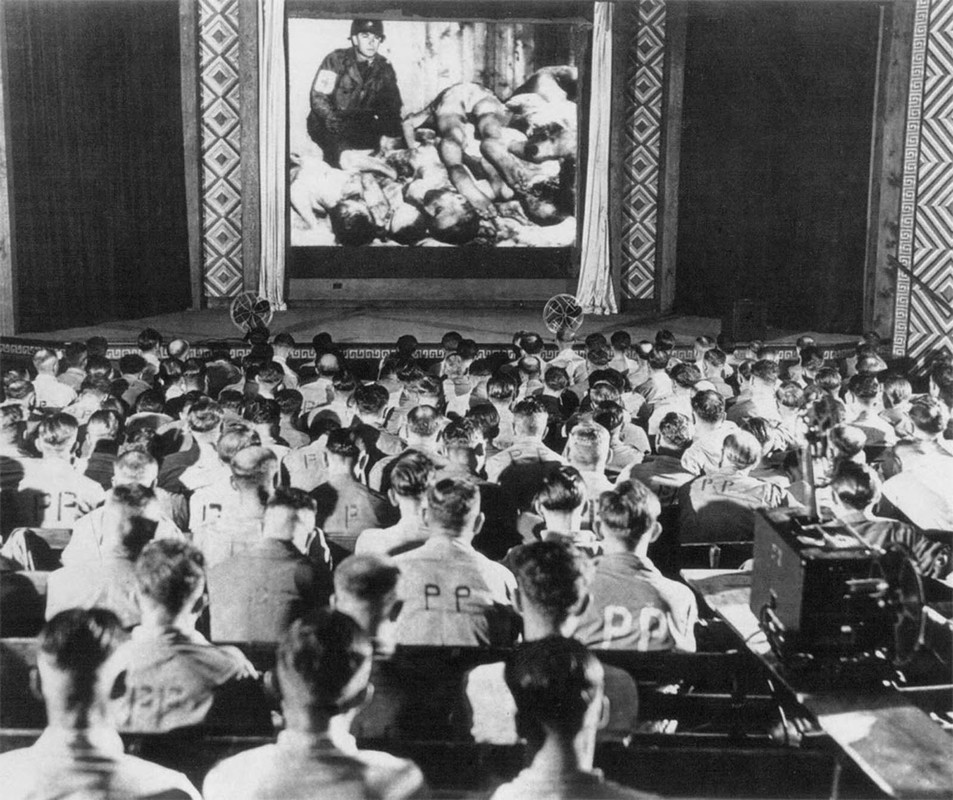 German POWs forced to watch footage of concentration camps 1945. This forced process was part of the Allied policy of postwar denazification, meant to purge Germany of the remnants of Nazi rule and rebuild its civil society, infrastructure, and economy. The program included compulsory visits to nearby concentration camps, posters displaying dead bodies of prisoners hung in public places, and forcing German prisoners of war to view films documenting the Nazis’ treatment of “inferior” people. The footage came from a newsreel shown in the US that was seen by millions and millions of people at the time. Seeing is believing. Often the only thing capable of denting humanity’s monumental ability to bunker down in a state of denial is indisputable, visual evidence. When cruel things take place on a massive and institutionalized scale behind closed doors and out of sight in societies, only jarring confrontation can shatter the delusions. If the ear won’t listen, tell it to the eye.
German POWs forced to watch footage of concentration camps 1945. This forced process was part of the Allied policy of postwar denazification, meant to purge Germany of the remnants of Nazi rule and rebuild its civil society, infrastructure, and economy. The program included compulsory visits to nearby concentration camps, posters displaying dead bodies of prisoners hung in public places, and forcing German prisoners of war to view films documenting the Nazis’ treatment of “inferior” people. The footage came from a newsreel shown in the US that was seen by millions and millions of people at the time. Seeing is believing. Often the only thing capable of denting humanity’s monumental ability to bunker down in a state of denial is indisputable, visual evidence. When cruel things take place on a massive and institutionalized scale behind closed doors and out of sight in societies, only jarring confrontation can shatter the delusions. If the ear won’t listen, tell it to the eye. -
2.
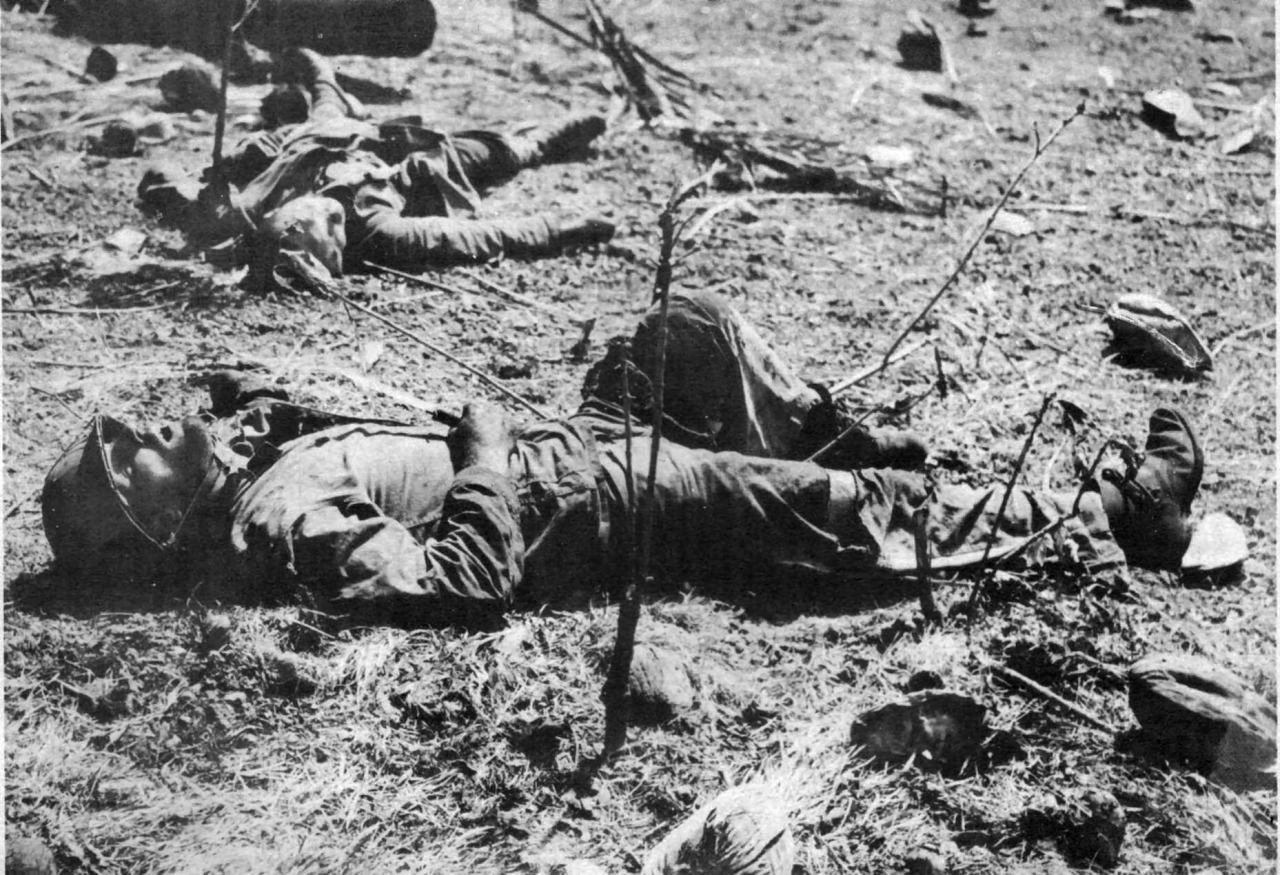 A dead U.S Marine still clutches the knife he used to kill a Japanese soldier, in the background, in a duel. He was killed by a sniper’s bullet moments later.
A dead U.S Marine still clutches the knife he used to kill a Japanese soldier, in the background, in a duel. He was killed by a sniper’s bullet moments later. -
3.
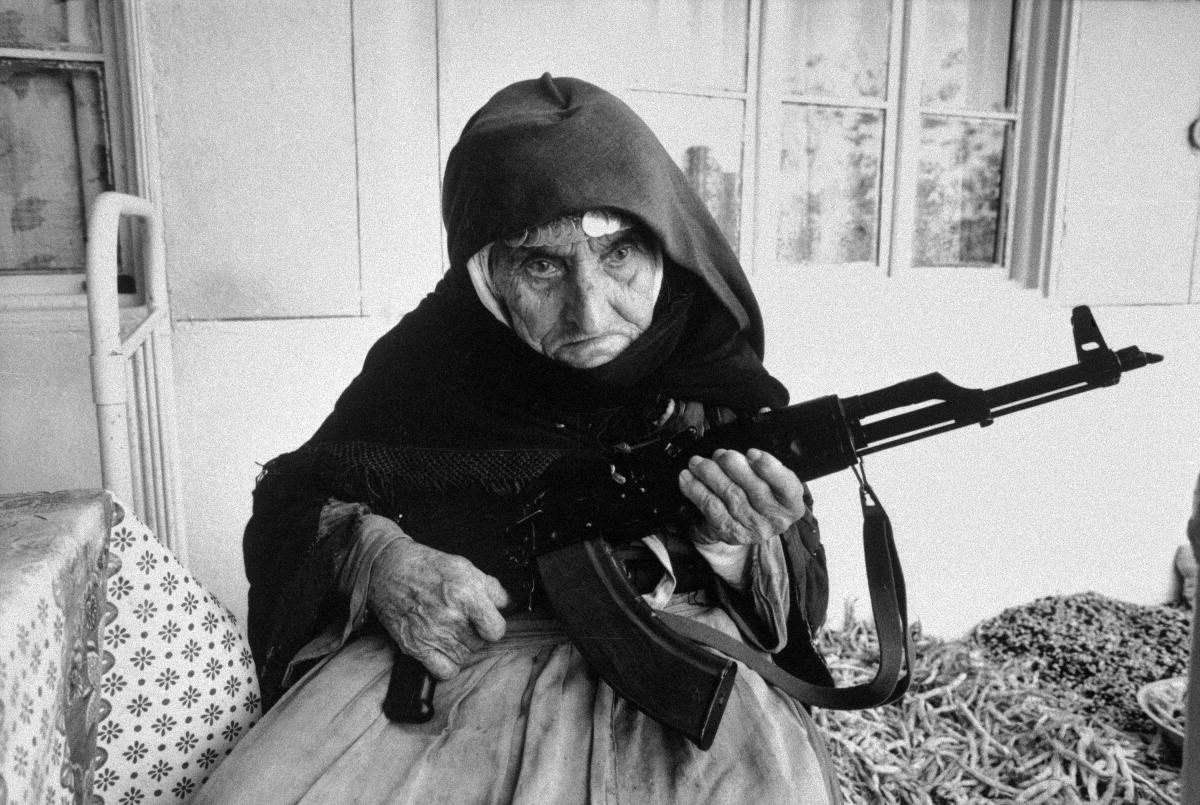 106-year old Armenian woman protecting her home with an AK-47, 1990
106-year old Armenian woman protecting her home with an AK-47, 1990 -
4.
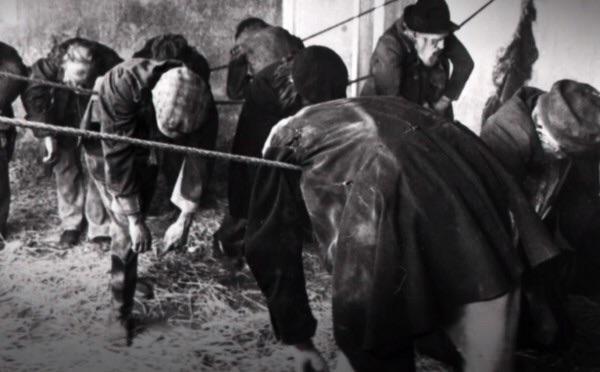 A “two penny hangover” sleeping arrangement in a Victorian poorhouse circa 1900. These shelters charged the clients different amounts depending on the amenities offered. At the low end was a penny sit-up, where a homeless client could get food and shelter from the cold in exchange for a penny. He was allowed to sit on a bench all night, but was not allowed to sleep. For an additional penny, there was the “two penny hangover”. It was like a penny sit-up except that a rope was placed in front of the bench. The client was allowed to sleep when he leaned on (or hung over) the rope during the night. He was not allowed to lie down flat on his back and sleep. The rope was cut at daybreak in order to encourage the clients to wake up early and leave. For four pennies, a homeless client could stay at a coffin house. He received food and shelter. Moreover, he was allowed to lie down flat on his back and sleep in a coffin shaped wooden box. A client was given a tarpaulin for covering. What made this unique is that it was the cheapest homeless shelter in London at that time that allowed its clients to lie down on their back and sleep. The Salvation Army also offered shelters that allowed its clients to sleep on a bed for a much higher price. Hence, the coffin house was popular because it offered an economical and midrange solution for homeless clients looking for relief from the cold.
A “two penny hangover” sleeping arrangement in a Victorian poorhouse circa 1900. These shelters charged the clients different amounts depending on the amenities offered. At the low end was a penny sit-up, where a homeless client could get food and shelter from the cold in exchange for a penny. He was allowed to sit on a bench all night, but was not allowed to sleep. For an additional penny, there was the “two penny hangover”. It was like a penny sit-up except that a rope was placed in front of the bench. The client was allowed to sleep when he leaned on (or hung over) the rope during the night. He was not allowed to lie down flat on his back and sleep. The rope was cut at daybreak in order to encourage the clients to wake up early and leave. For four pennies, a homeless client could stay at a coffin house. He received food and shelter. Moreover, he was allowed to lie down flat on his back and sleep in a coffin shaped wooden box. A client was given a tarpaulin for covering. What made this unique is that it was the cheapest homeless shelter in London at that time that allowed its clients to lie down on their back and sleep. The Salvation Army also offered shelters that allowed its clients to sleep on a bed for a much higher price. Hence, the coffin house was popular because it offered an economical and midrange solution for homeless clients looking for relief from the cold. -
5.
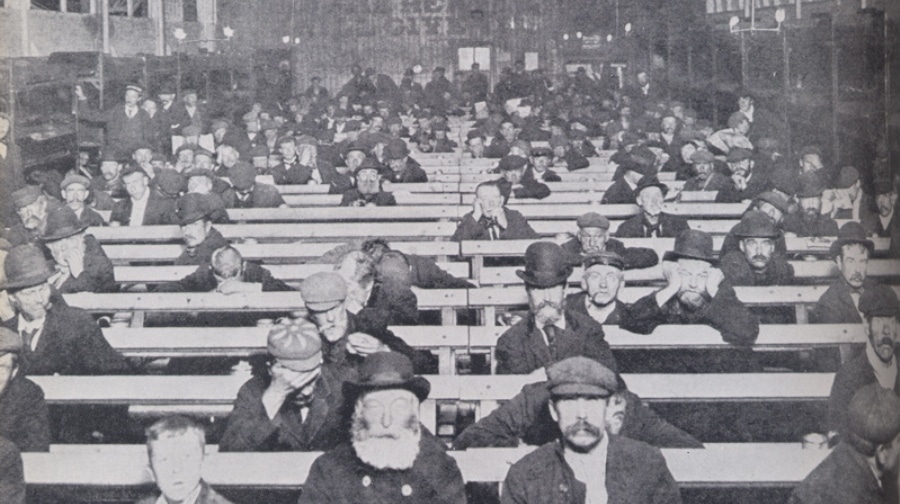 A Penny Sit-Up
A Penny Sit-Up -
6.
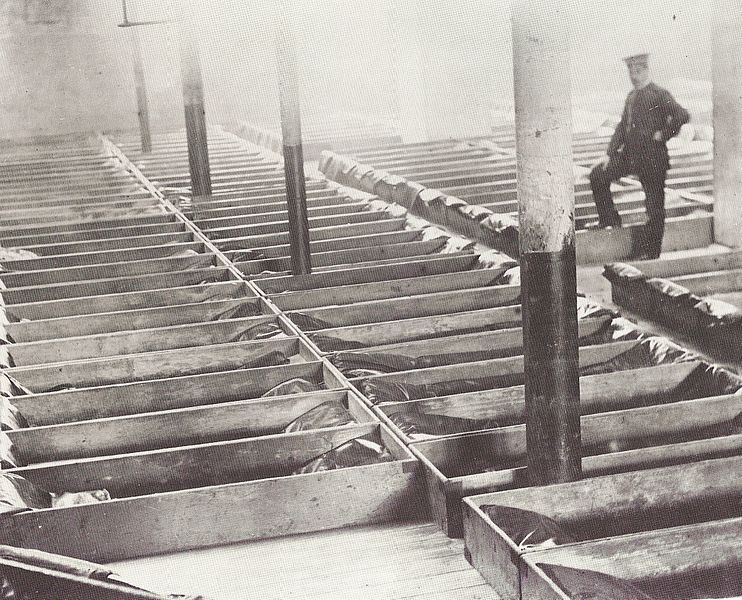 Coffin House
Coffin House -
7.
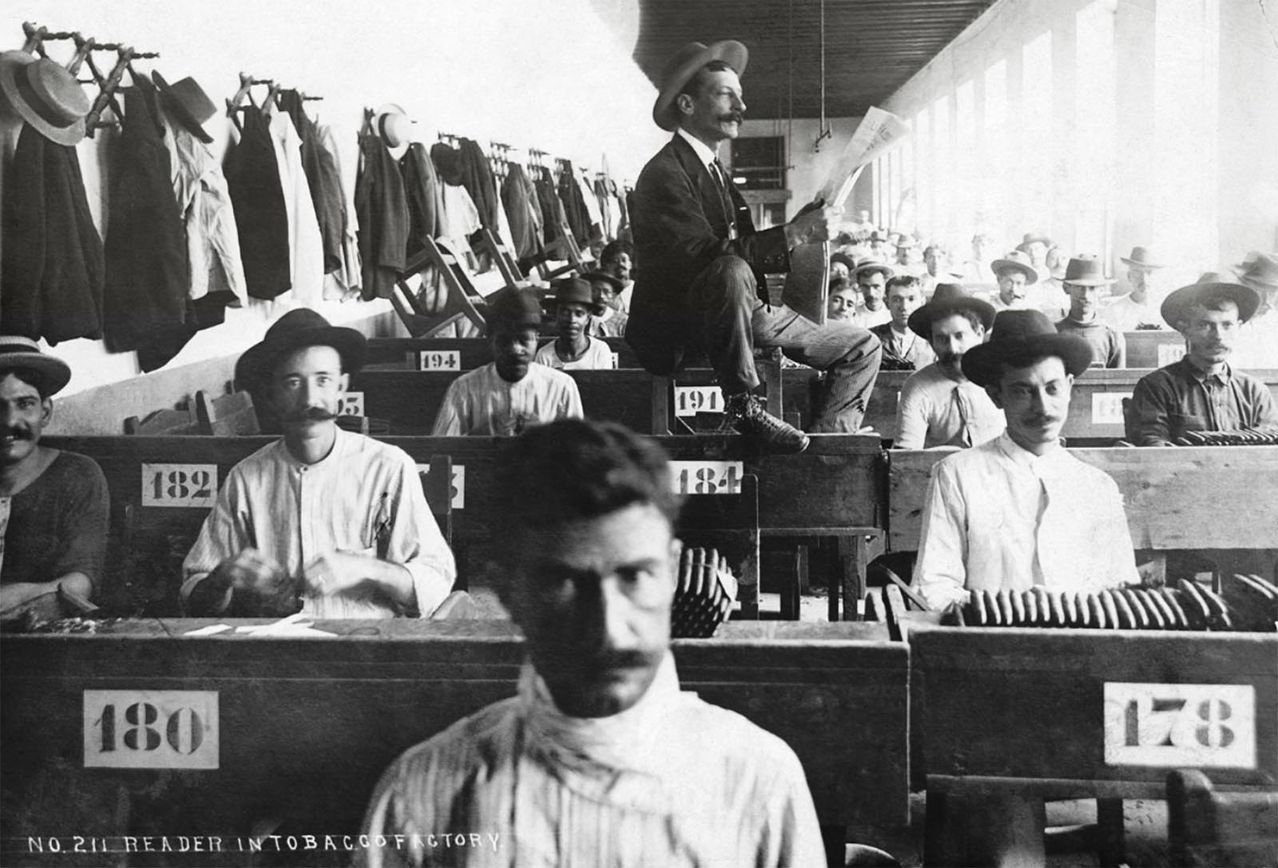 A hired reader reads to cigar makers hard at work in Cuban cigar factory, ca. 1900-1910. Workers in Cuban cigar factories would employ a “Lector” who would read newspapers, political treatises and classical literature to break the monotony of the cigar-rollers’ work, so even illiterate cigar-rollers would be well-informed and familiar with great literature
A hired reader reads to cigar makers hard at work in Cuban cigar factory, ca. 1900-1910. Workers in Cuban cigar factories would employ a “Lector” who would read newspapers, political treatises and classical literature to break the monotony of the cigar-rollers’ work, so even illiterate cigar-rollers would be well-informed and familiar with great literature -
8.
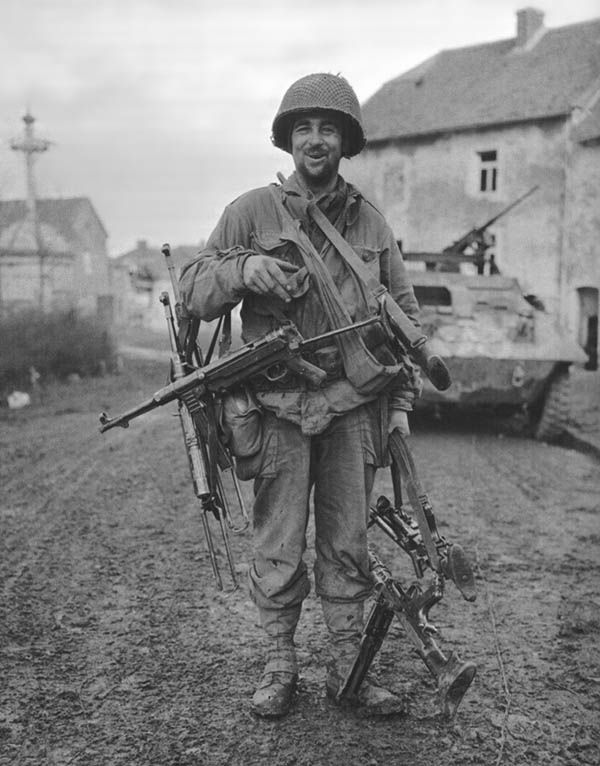 American soldier poses with captured German weaponry, 1944-45. Every weapon has a signature, and using an enemy weapon can invite friendly fire. Prior to D-Day, American paratroops conducted mechanical training on German weapons (there was insufficient ammo for live fire training). With many men separated from their leg bags and weapons thanks to high-speed drops (which led to violent parachute openings), picking up a German weapon was fairly common. In the well-documented E company of the 2/506th PIR, Lt. Dick Winters briefly carried a German Mauser until he could recover an M1 from an American casualty (this is described in Steven Ambrose’s book and depicted in the TV miniseries). That had no consequences for him, but Sergeant Bill Guarnere had problems when he picked up an MG42. In his own words: I went looking for a gun, and found a Thompson submachine gun. I also took a German MG-42 off a dead Kraut and started shooting it, but the gun made a noise that was distinctly German. The German guns went brrrrrrrrrrt! The American guns went bap-bap-bap-bap-bap. Every time I started shooting it, the Americans started shooting at me! I got shot at by a dozen or so of our own men. I threw it the hell away. You learn fast or you get killed. I grabbed an M1 instead.
American soldier poses with captured German weaponry, 1944-45. Every weapon has a signature, and using an enemy weapon can invite friendly fire. Prior to D-Day, American paratroops conducted mechanical training on German weapons (there was insufficient ammo for live fire training). With many men separated from their leg bags and weapons thanks to high-speed drops (which led to violent parachute openings), picking up a German weapon was fairly common. In the well-documented E company of the 2/506th PIR, Lt. Dick Winters briefly carried a German Mauser until he could recover an M1 from an American casualty (this is described in Steven Ambrose’s book and depicted in the TV miniseries). That had no consequences for him, but Sergeant Bill Guarnere had problems when he picked up an MG42. In his own words: I went looking for a gun, and found a Thompson submachine gun. I also took a German MG-42 off a dead Kraut and started shooting it, but the gun made a noise that was distinctly German. The German guns went brrrrrrrrrrt! The American guns went bap-bap-bap-bap-bap. Every time I started shooting it, the Americans started shooting at me! I got shot at by a dozen or so of our own men. I threw it the hell away. You learn fast or you get killed. I grabbed an M1 instead. -
9.
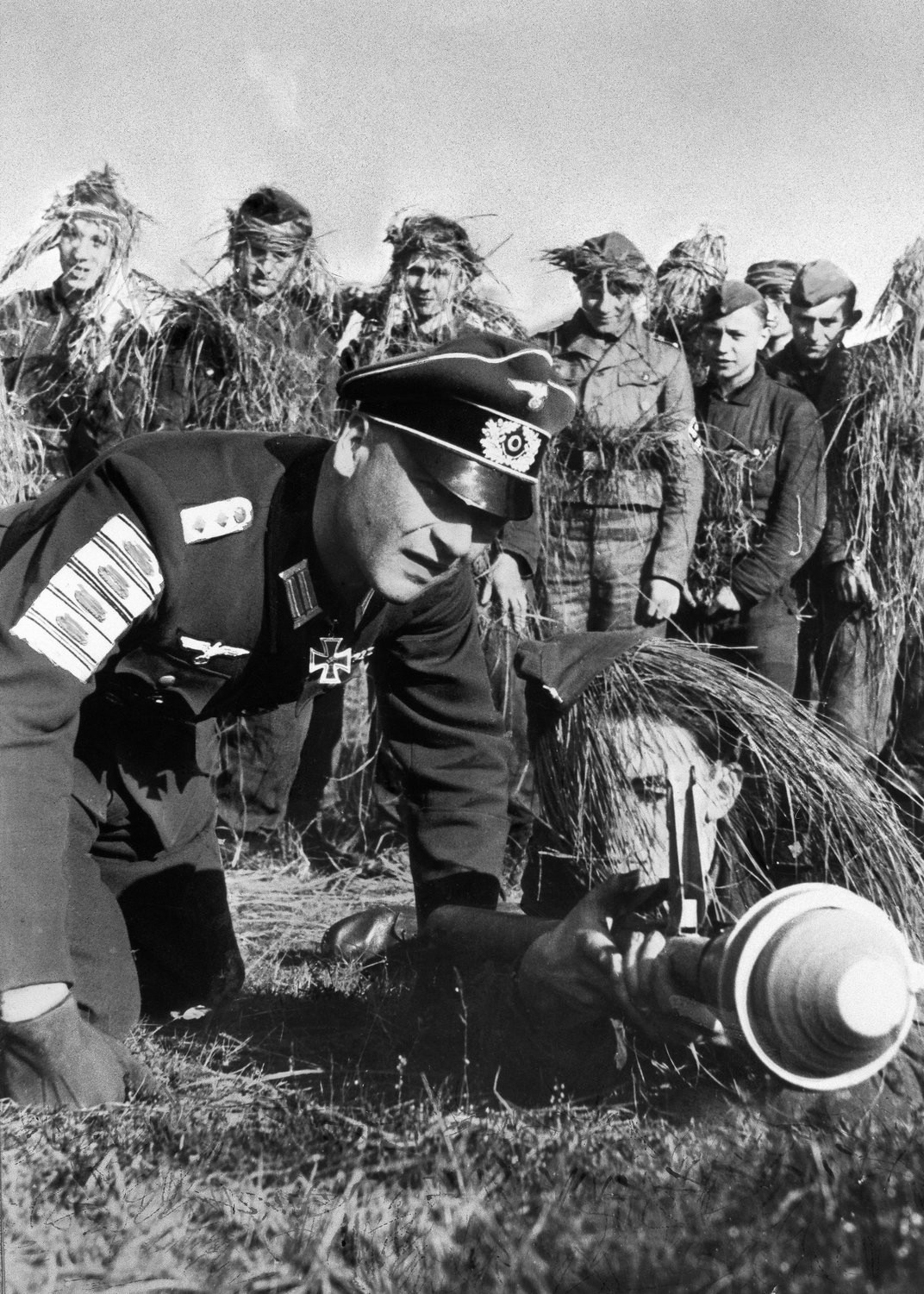 A Wehrmacht veteran teaches Hitler Youth boys how to use a Panzerfaust. The badges on his sleeve represent enemy tanks destroyed.
A Wehrmacht veteran teaches Hitler Youth boys how to use a Panzerfaust. The badges on his sleeve represent enemy tanks destroyed. -
10.
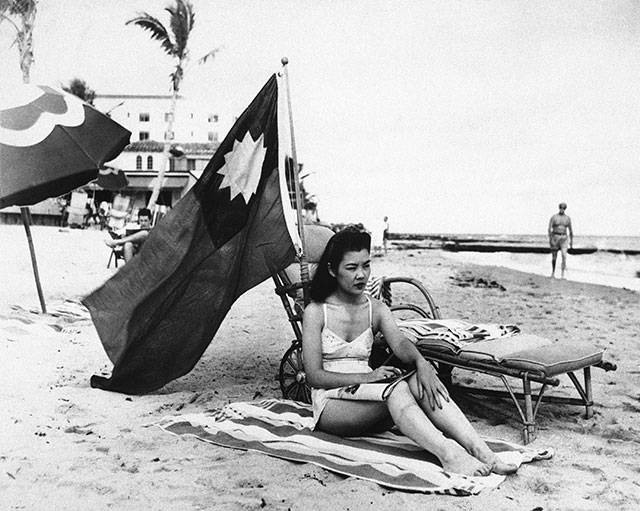 Ruth Lee, a hostess at a Chinese restaurant, flies a Chinese flag so she isn’t mistaken for Japanese when she sunbathes on her days off in Miami, in the wake of the attack on Pearl Harbor, Dec. 15, 1941
Ruth Lee, a hostess at a Chinese restaurant, flies a Chinese flag so she isn’t mistaken for Japanese when she sunbathes on her days off in Miami, in the wake of the attack on Pearl Harbor, Dec. 15, 1941 -
11.
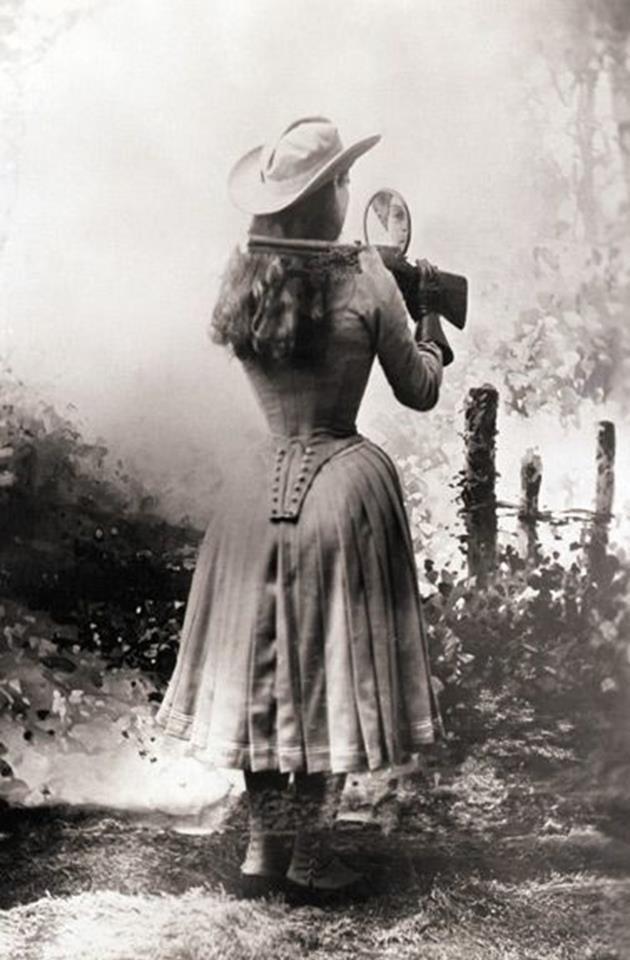 Annie Oakley shooting over her shoulder using a hand mirror, 1888. Annie Oakley was an American sharpshooter and exhibition shooter. Her amazing talent first came to light when the then-15-year-old won a shooting match with traveling-show marksman Frank E. Butler (whom she married). The couple joined Buffalo Bill’s Wild West show a few years later. Oakley became a renowned international star, performing before royalty and heads of state.
Annie Oakley shooting over her shoulder using a hand mirror, 1888. Annie Oakley was an American sharpshooter and exhibition shooter. Her amazing talent first came to light when the then-15-year-old won a shooting match with traveling-show marksman Frank E. Butler (whom she married). The couple joined Buffalo Bill’s Wild West show a few years later. Oakley became a renowned international star, performing before royalty and heads of state. -
12.
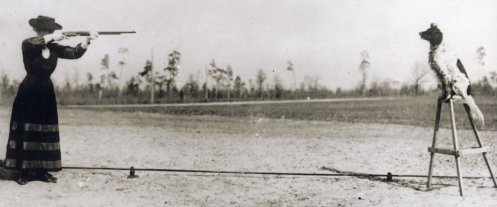 Annie shooting an apple off her dog’s head
Annie shooting an apple off her dog’s head -
13.
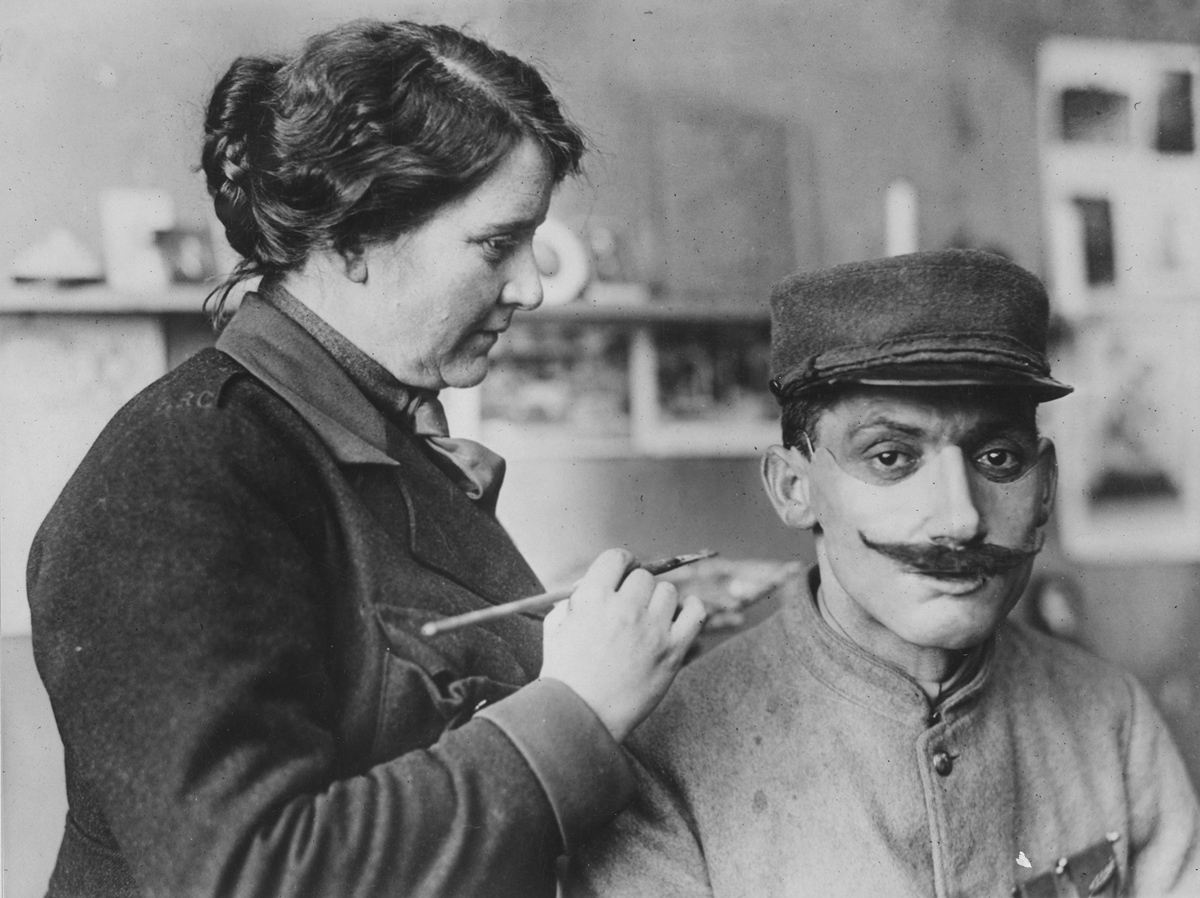 Masks made for men with disfigured faces from war wounds. Original caption: Mrs. Ladd coloring one of the masks after adjusting on a wounded Poilu’s face, 1917
Masks made for men with disfigured faces from war wounds. Original caption: Mrs. Ladd coloring one of the masks after adjusting on a wounded Poilu’s face, 1917 -
14.
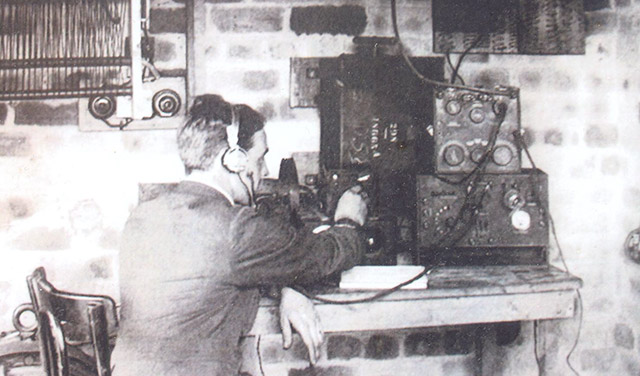 During World War 2, the British captured Germans and put them in a bugged mansion where they served them wine and food and thus they were able to gather important intelligence from casual conversations between the ‘prisoners’ that helped them greatly win the war
During World War 2, the British captured Germans and put them in a bugged mansion where they served them wine and food and thus they were able to gather important intelligence from casual conversations between the ‘prisoners’ that helped them greatly win the war -
15.
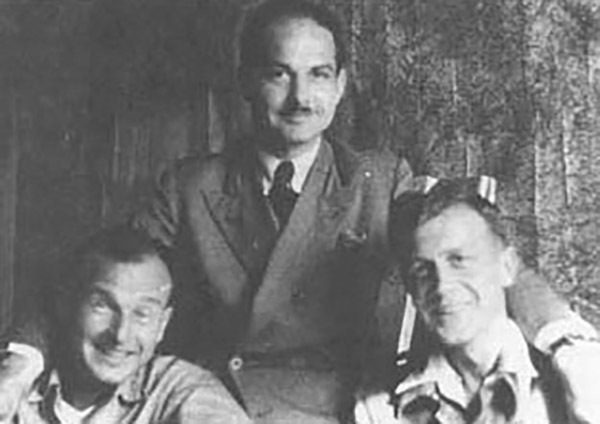 The German counterpart to this probably belongs to Hanns Scharff, who was an interrogator for the Luftwaffe and specialized in questioning American pilots. Unlike many other German interrogators, Scharff avoided physical means and torture to acquire information. He instead chose mind games and played to his subjects vulnerability of desiring hope and reprieve from life as a POW. He was know for his forest walks where he’d take his prisoner on a walk and asked casual questions about the soldiers life and his day to day living. Scharff would often exchange jokes and food to build a relation with the person he desired information from so they’d be more willing to share secrets with someone they considered to be a friend in a place where peace of the mind was scarce. For those who proved reluctant to succumb to Scharff’s charm, he would conduct detailed research from Luftwaffe files to get people to be more participatory. Scharff took advantage of the Gestapo’s fearsome reputation, offering himself as the prisoners only escape from being dragged away by the infamous group. He would ask questions he already knew the answer to, if the prisoner refused to talk he’d provide the answer assuring that he already knew everything. Tricked into a false sense of security that nothing could be divulged that he already didn’t know, they’d begin to answer questions for him without his que, often unaware of the significance of what they were saying. After the war, Scharff emigrated to the US where he shared the secret of his craft with the military and law enforcement, and quickly were adopted by numerous governments across the world. His techniques proved revolutionary and those same tricks were later used in another high profile case decades later. In the early 2000s a lowly American FBI agent named George Piro used those same techniques proposed by Scharff to uncover the secrets of Saddam Hussein. In his several month long interogation, Saddam revealed the infamous claims that Iraq was linked to weapons of mass destruction and to Al Queda were unsubstantiated.
The German counterpart to this probably belongs to Hanns Scharff, who was an interrogator for the Luftwaffe and specialized in questioning American pilots. Unlike many other German interrogators, Scharff avoided physical means and torture to acquire information. He instead chose mind games and played to his subjects vulnerability of desiring hope and reprieve from life as a POW. He was know for his forest walks where he’d take his prisoner on a walk and asked casual questions about the soldiers life and his day to day living. Scharff would often exchange jokes and food to build a relation with the person he desired information from so they’d be more willing to share secrets with someone they considered to be a friend in a place where peace of the mind was scarce. For those who proved reluctant to succumb to Scharff’s charm, he would conduct detailed research from Luftwaffe files to get people to be more participatory. Scharff took advantage of the Gestapo’s fearsome reputation, offering himself as the prisoners only escape from being dragged away by the infamous group. He would ask questions he already knew the answer to, if the prisoner refused to talk he’d provide the answer assuring that he already knew everything. Tricked into a false sense of security that nothing could be divulged that he already didn’t know, they’d begin to answer questions for him without his que, often unaware of the significance of what they were saying. After the war, Scharff emigrated to the US where he shared the secret of his craft with the military and law enforcement, and quickly were adopted by numerous governments across the world. His techniques proved revolutionary and those same tricks were later used in another high profile case decades later. In the early 2000s a lowly American FBI agent named George Piro used those same techniques proposed by Scharff to uncover the secrets of Saddam Hussein. In his several month long interogation, Saddam revealed the infamous claims that Iraq was linked to weapons of mass destruction and to Al Queda were unsubstantiated. -
16.
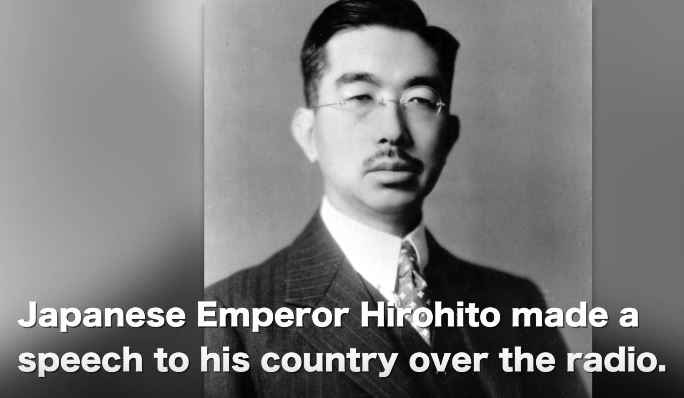 On August 14 1945, more than 1,000 Japanese officers raided the Imperial palace to destroy the recording of the Emperor’s speech of surrender. Confused by the layout of the palace, the rebels never found the recording. It was later smuggled outside in basket of women’s underwear for broadcast The speech was probably the first time that an Emperor of Japan had spoken (albeit via a phonograph record) to the common people. It was delivered in the formal, classical Japanese that few ordinary people could easily understand. It made no direct reference to a surrender of Japan, instead stating that the government had been instructed to accept the terms of the Potsdam Declaration fully.
On August 14 1945, more than 1,000 Japanese officers raided the Imperial palace to destroy the recording of the Emperor’s speech of surrender. Confused by the layout of the palace, the rebels never found the recording. It was later smuggled outside in basket of women’s underwear for broadcast The speech was probably the first time that an Emperor of Japan had spoken (albeit via a phonograph record) to the common people. It was delivered in the formal, classical Japanese that few ordinary people could easily understand. It made no direct reference to a surrender of Japan, instead stating that the government had been instructed to accept the terms of the Potsdam Declaration fully. -
17.
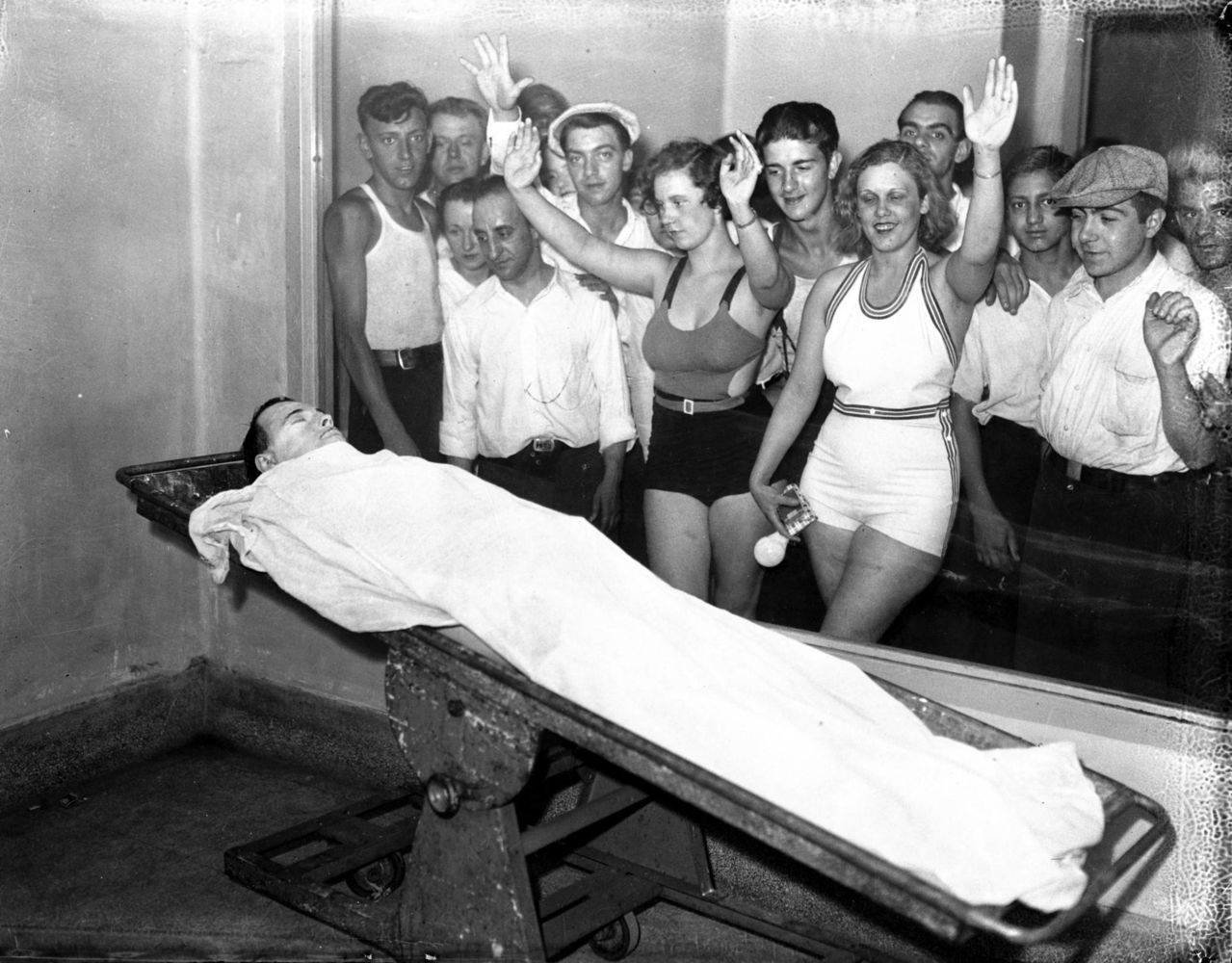 There were enough discrepancies in famous outlaw John Dillinger’s autopsy and oddities in the events leading up to his death to suggest that the FBI killed the wrong man and simply claimed otherwise to escape embarrassment. “FBI agents claimed to have seen Dillinger reach for a weapon before he set off running into the side alleyway. The FBI even showcased in their headquarters the gun that was supposedly on Dillinger’s body the night he was killed. It turns out, however, that the small Colt semi-automatic pistol on display at the FBI was only manufactured after Dillinger’s death, making it impossible to have been the one he was allegedly carrying. Forensic analysis of the victim showed that he had stippling patterns on his neck, which is due to close range fire, and when writer Jay Robert Nash conducted his reconstruction of the crime scene in 1970 it showed that Dillinger had to have been in a prone position when he was shot. This would suggest that Dillinger was somehow tackled to the ground and was defenseless. Several physical discrepancies also existed. The scar on Dillinger’s face was not present at autopsy, which could have been the result of successful plastic surgery, but upon viewing the victim, Dillinger’s father exclaimed that it was not his son. A close up of the corpse face showed a full set of front teeth, however, it was known through various documented photographs and dental records that Dillinger was missing his front right incisor. The corpse’s brown eyes also did not match that of Dillinger, who supposedly had grey eyes. Finally, the body showed signs of certain illnesses and heart conditions that were inconsistent with prior medical records and Dillinger’s level of activity.“
There were enough discrepancies in famous outlaw John Dillinger’s autopsy and oddities in the events leading up to his death to suggest that the FBI killed the wrong man and simply claimed otherwise to escape embarrassment. “FBI agents claimed to have seen Dillinger reach for a weapon before he set off running into the side alleyway. The FBI even showcased in their headquarters the gun that was supposedly on Dillinger’s body the night he was killed. It turns out, however, that the small Colt semi-automatic pistol on display at the FBI was only manufactured after Dillinger’s death, making it impossible to have been the one he was allegedly carrying. Forensic analysis of the victim showed that he had stippling patterns on his neck, which is due to close range fire, and when writer Jay Robert Nash conducted his reconstruction of the crime scene in 1970 it showed that Dillinger had to have been in a prone position when he was shot. This would suggest that Dillinger was somehow tackled to the ground and was defenseless. Several physical discrepancies also existed. The scar on Dillinger’s face was not present at autopsy, which could have been the result of successful plastic surgery, but upon viewing the victim, Dillinger’s father exclaimed that it was not his son. A close up of the corpse face showed a full set of front teeth, however, it was known through various documented photographs and dental records that Dillinger was missing his front right incisor. The corpse’s brown eyes also did not match that of Dillinger, who supposedly had grey eyes. Finally, the body showed signs of certain illnesses and heart conditions that were inconsistent with prior medical records and Dillinger’s level of activity.“ -
18.
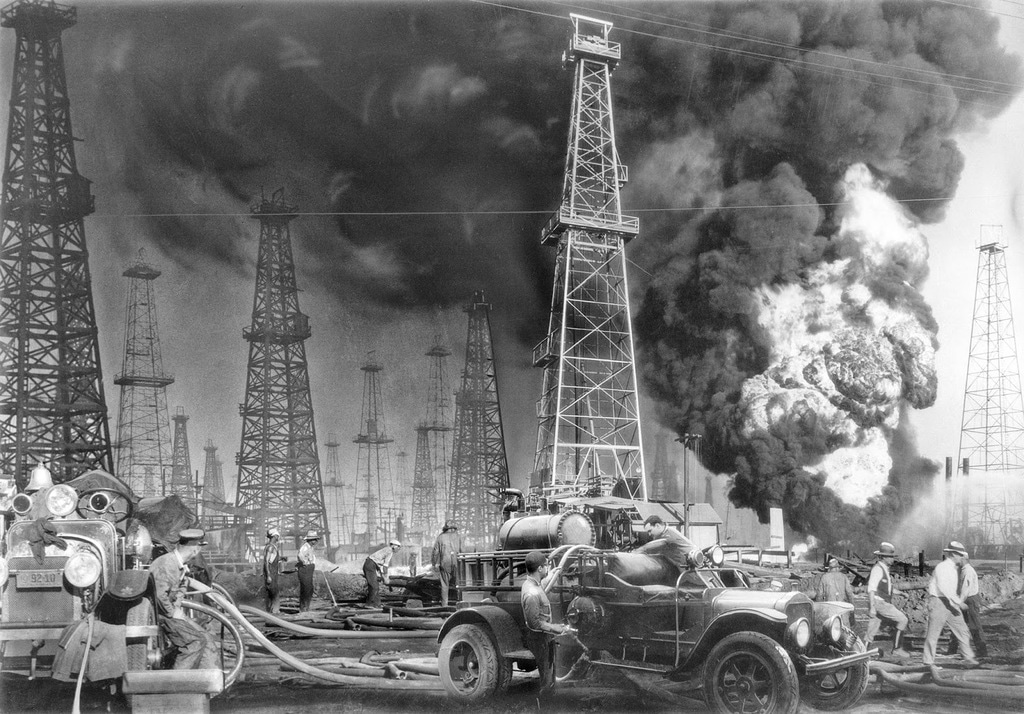 Oil well fire on Signal Hill, California. 1931
Oil well fire on Signal Hill, California. 1931 -
19.
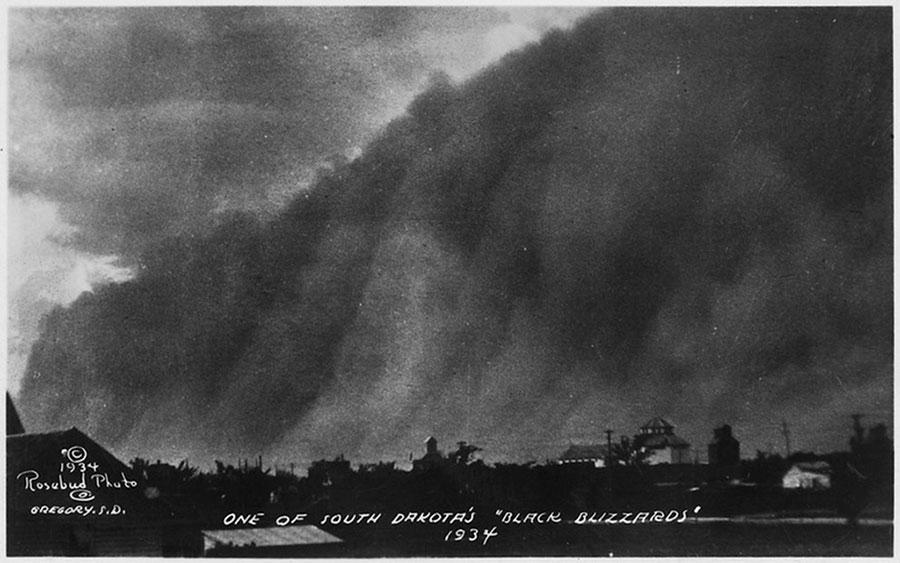 One of South Dakota’s “Black Blizzards” – 1934. In North America, the term “Dust Bowl” was first used to describe a series of dust storms that hit the prairies of Canada and the United States during the 1930s, and later to describe the area in the United States that was most affected by the storms, including western Kansas, eastern Colorado, northeastern New Mexico, and the Oklahoma and Texas panhandles. The “black blizzards” started in the Eastern states in 1930, affecting agriculture from Maine to Arkansas. By 1934 they had reached the Great Plains, stretching from North Dakota to Texas, and from the Mississippi River Valley to the Rocky Mountains. “The Dust Bowl” (as an area) received its name following the disastrous “Black Sunday” storm in April 1935, when reporter Robert L. Geiger referred to the region as “The Dust Bowl” in his account of the storm.
One of South Dakota’s “Black Blizzards” – 1934. In North America, the term “Dust Bowl” was first used to describe a series of dust storms that hit the prairies of Canada and the United States during the 1930s, and later to describe the area in the United States that was most affected by the storms, including western Kansas, eastern Colorado, northeastern New Mexico, and the Oklahoma and Texas panhandles. The “black blizzards” started in the Eastern states in 1930, affecting agriculture from Maine to Arkansas. By 1934 they had reached the Great Plains, stretching from North Dakota to Texas, and from the Mississippi River Valley to the Rocky Mountains. “The Dust Bowl” (as an area) received its name following the disastrous “Black Sunday” storm in April 1935, when reporter Robert L. Geiger referred to the region as “The Dust Bowl” in his account of the storm.
- NEXT GALLERY
-

- 26 Fresh Memes To Kick Start Your Day
German POWs forced to watch footage of concentration camps 1945. This forced process was part of the Allied policy of postwar denazification, meant to purge Germany of the remnants of Nazi rule and rebuild its civil society, infrastructure, and economy. The program included compulsory visits to nearby concentration camps, posters displaying dead bodies of prisoners hung in public places, and forcing German prisoners of war to view films documenting the Nazis’ treatment of “inferior” people. The footage came from a newsreel shown in the US that was seen by millions and millions of people at the time. Seeing is believing. Often the only thing capable of denting humanity’s monumental ability to bunker down in a state of denial is indisputable, visual evidence. When cruel things take place on a massive and institutionalized scale behind closed doors and out of sight in societies, only jarring confrontation can shatter the delusions. If the ear won’t listen, tell it to the eye.
19/19
1/19





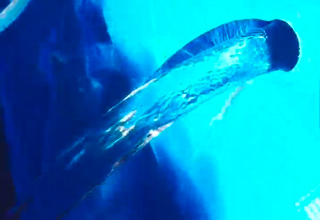


0 Comments